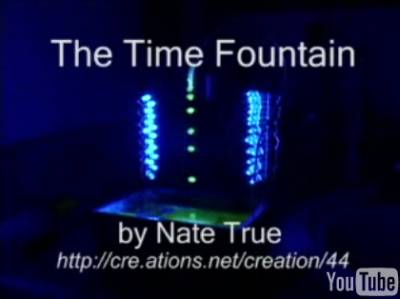What's inside a cheap motion sensor that costs around 160 yen?

10maurycy10, an engineer who reverse engineers various devices, published the results of his analysis of the microwave radar sensor 'RCWL-0516' that sells for $1 (about 161 yen) on his blog.
Inside a 1 dollar radar motion sensor | Maurycy's blog
The RCWL-0516 board looks like this. The top half is the front side and the bottom half is the back side. To operate this sensor, simply connect the 'VIN' on the right end to a 5V power supply and the 'GND' to a 0V GND.
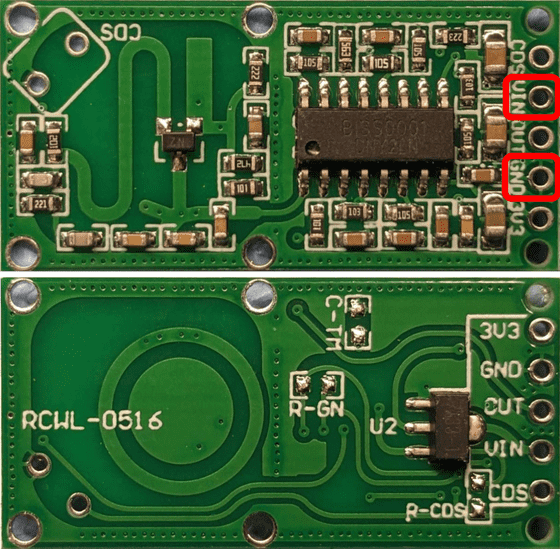
First, 10maurycy10 analyzed the large chip 'BIS0001' installed on the board. Radars that detect motion and speed generally transmit continuous waves, which are electromagnetic waves with constant amplitude and frequency, and mix them with the received signal to generate an intermediate frequency signal. When an electromagnetic wave bounces off a moving object, the phase of the transmitted signal and the received signal shift, which allows the motion and speed to be detected.
When checking the intermediate frequency signal input to BIS0001 with an oscilloscope, it looks like this. To check the performance of the sensor, 10maurycy10 moved his laptop towards the sensor, but the sensor detected not only the movement of the PC but also the movement of the hand before and after it.
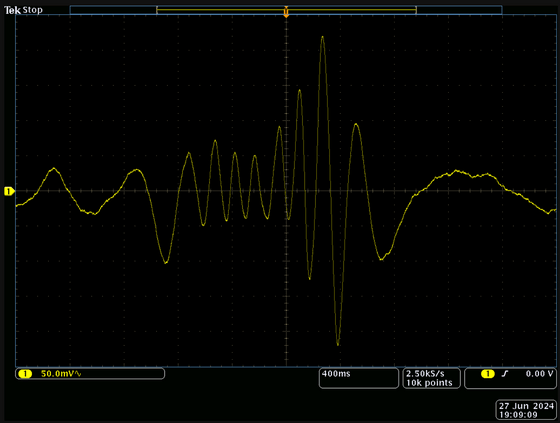
Since the RCWL-0516 is a sensor that detects 'motion' regardless of speed, the BIS0001 only needs to detect slight changes in the input signal. And the signal is generated on the left half of the board.
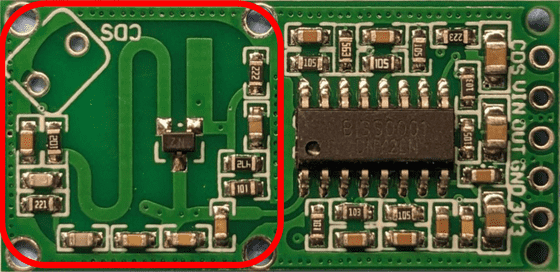
The circuit on the left looks like this: At first glance it appears to be a single transistor oscillator operating at 3.18GHz, but it is actually two oscillators combined into one, with microwave oscillation pulsed at about 20MHz.
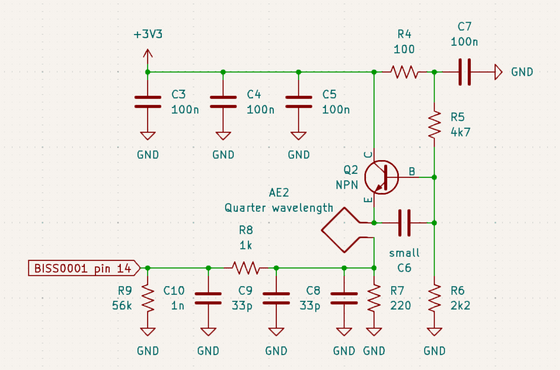
If you look at the emitter waveform, you can clearly see that it is pulsed. This pulse allows the oscillator to function as a super-regenerative receiver, which means that even if a small signal is received, it amplifies it again and again until it reaches the required signal size.
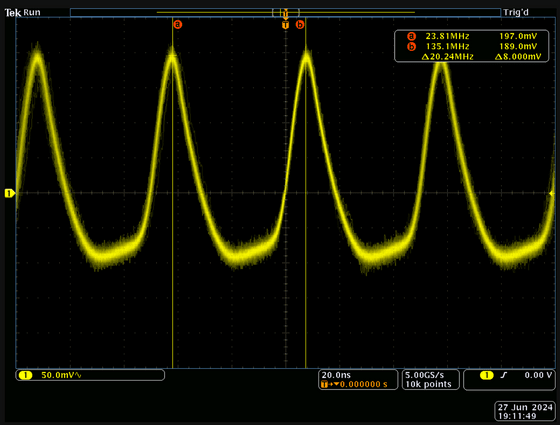
In the RCWL-0516, reflections from stationary objects more than 2.5 meters away are used as a radar local oscillator, and the super-regenerative receiver detects the amplitude-modulated signal from the interference of signals reflected from stationary and moving objects. Therefore, while the sensor works well indoors where there are many reflections from stationary objects, the sensor may not work at all outdoors even at the appropriate distance where there are no suitable stationary objects.
10maurycy10 says that he removed the capacitor for pulse generation in order to use the RCWL-0516 outdoors.
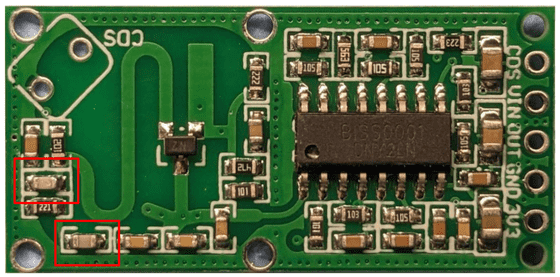
Since the RCWL-0516 was no longer emitting pulses and was no longer able to receive signals, 10maurycy10 set up another RCWL-0516 and checked the received signal, which was much more consistent, as shown below.
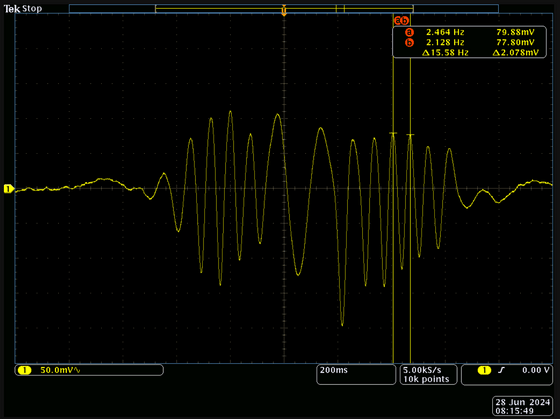
Although its sensitivity as a motion sensor has decreased, the sensor now functions reasonably well outdoors, and the improved signal consistency means it can now be used as a speed sensor.
Related Posts:
in Hardware, , Posted by log1d_ts


